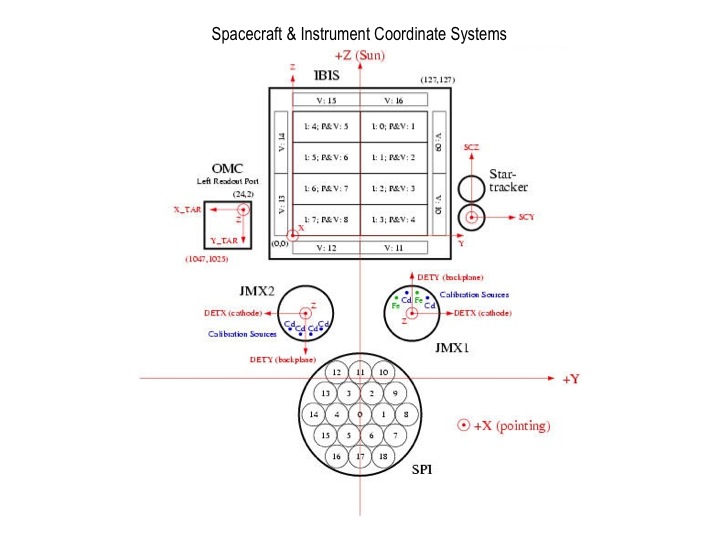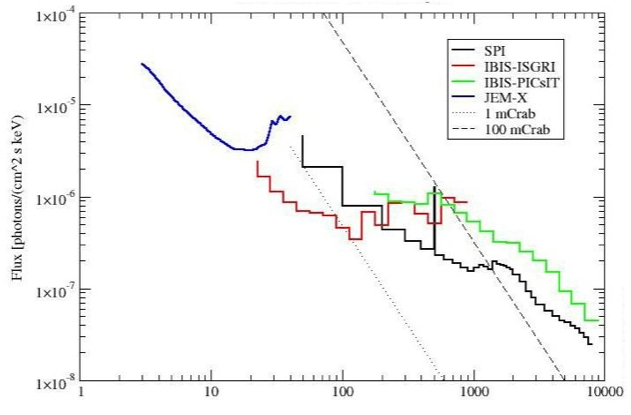 |
The coordinate system incident to the INTEGRAL is an X, Y, Z orthogonal coordinate system with the origin at the center of the separation plane between spacecraft and launch adaptor, see Figure 3. The X-axis is perpendicular to this spacecraft/launcher separation plane, pointing positively from the separation plane towards the spacecraft (i.e. the X-axis is the pointing direction). The Z-axis is orthogonal to the solar array surface, pointing positively to the sun, i.e. the sun is illuminating the payload module on the IBIS side, while leaving SPI in the shadow. The Y -axis completes the coordinate system.
| SPI | IBIS | |
| Energy range | 20 keV Ð 8 MeV | 15 keV Ð 10 MeV |
| Detector | 19 Ge detectors cooled to 85 K | 16384 CdTe detectors (ISGRI), |
| 4096 CsI detectors (PICsIT) | ||
| Detector area (cm2 ) | 500 | 2600 (CdTe), 3100 (CsI) |
| Spectral resolution (FWHM) | 2.3 keV @ 1.3 MeV | 9 keV @ 100 keV |
| Field of view (fully coded) | 16 (corner to corner) | 9 |
| Angular resolution (FWHM) | 2.5 (point source) | 12 |
| Source location (radius) | 1.3 (depending on the source strength) | 1 (for 10 source) |
| Absolute timing accuracy (3 ) | 129 s | 92 s |
| JEM-X | OMC | |
| Energy range | 3 keV Ð 35 keV | 500 nm Ð 600 nm |
| Detector | Microstrip Xe/CH4 -gas | CCD + V-filter |
| detector (1.5 bar) | ||
| Detector area (cm2 ) | 2 500 | CCD: (2061 1056) pixels |
| Imaging area: (1024 1024) pixels | ||
| Spectral resolution (FWHM) | 1.2 keV @ 10 keV | Ð |
| Field of view (fully coded) | 4.8 | 5 5 |
| Angular resolution (FWHM) | 3 | 23 |
| 10 source location (radius) | 30 | 2 |
| Absolute timing accuracy (3 ) | 122 s | 1 s |
 |